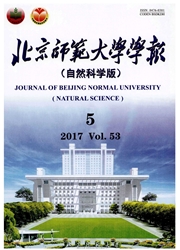

 中文摘要:
中文摘要:
提出了一个土壤水分变化过程对土壤蒸发、植被蒸腾以及土壤温度、叶片温度的影响存在较明显差异的假设,利用双层能量平衡模型推导出3个水分特征点(湿润、干旱和由湿到干的转折点)的组分温差(土壤温度减去叶片温度)公式,利用特征点的辐射温度和实际测量的红外温度间的关系来计算实际显热和潜热通量.用2001年北京顺义区实验期间的观测数据对本方法进行了验证,结果表明,用本方法能在只有一个角度的遥感温度数据情况下获取精度较高、误差较小的地表蒸散模拟结果.该法在分解植被蒸腾、土壤蒸发以及监测表层土壤和根区土壤旱情方面有很大的潜力.
 英文摘要:
英文摘要:
Assumptions about component temperature difference between soil and foliage at limited, ample and transition soil moisture conditions are proposed. And they are employed in calculating surface evapotranspiration from single-viewing-angle radiative surface temperature and two-layer model. The in-situ data collected during QRSLSP experiment at Shunyi, Beiiing, 2001 are used to validate this method. The estimated sensible and latent heat fluxes agree well with the field turbulent observations, and the errors are much smaller than that estimated by other 4 published methods. This method can also be used in monitoring soil surface and root layer drought, provided the separation of transpiration and evaporation is good enough.
 同期刊论文项目
同期刊论文项目
 同项目期刊论文
同项目期刊论文
 期刊信息
期刊信息
